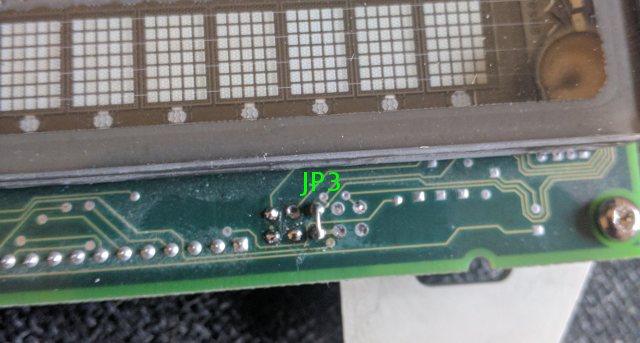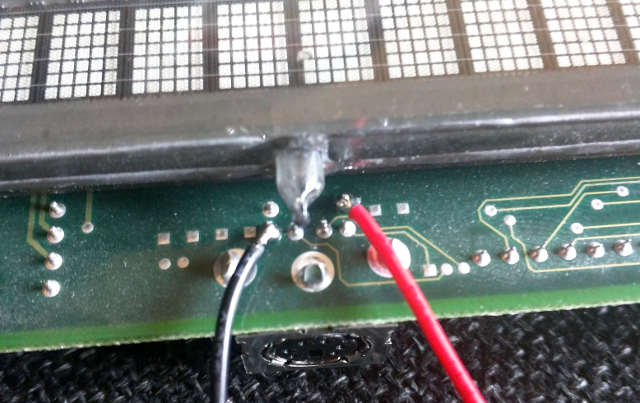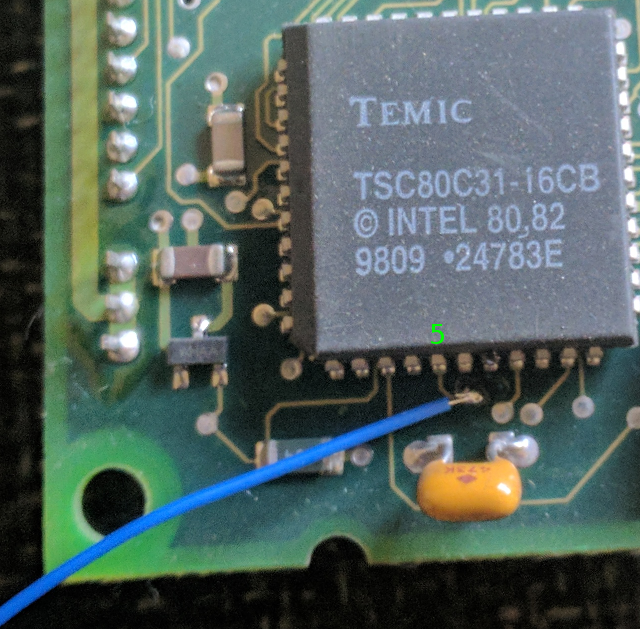RPi-BA63
Python code and Hardware modifications to use the BA63 Vacuum Fluorescent display with the Raspberry Pi
The BA63 display is a Vacuum Fluorescent display with a RS232 serial interface. These are easy to control over serial, but if you want to control it with the Raspberry Pi, there a a couple of small hitches:
1 The Raspberry Pi cannot drive 12v serial.
2 Seemingly the Raspberry pi built in serial cannot be changed to odd parity that the display expects by default.
From the manual we can see it is easy to turn parity off by simply jumpering JP3
To power the display (12v) you can either use the PS/2 port, or solder wires directly to the pins as shown below. Be careful not to strike the vacuum sealing pip with your soldering iron:
To drive the serial directly from the Raspberry Pi, we simply need to find a point on the PCB that will accept our 3v3 levels. The BA63 is controlled with the TEMIC TSC80C31-16CB microcontroller. Pin 5 is the RX pin.
https://www.alldatasheet.com/datasheet-pdf/pdf/29664/TEMIC/TSC80C31-16CB.html
There is a convenient pad on the board that a small piece of wire wrap wire can be soldered to:
Connect your Raspberry Pi tx pin to this, and you are good to go.
All the Python code is in src/ containing demos that: Display Text, Display the time, Scroll text and so on. Code is well commented but refer to the BA63 manual for escape codes etc.


